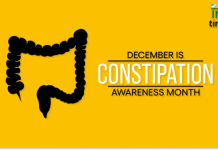
Every year, October 17th is observed as World Trauma Day, a day dedicated to raising awareness about trauma and the importance of prevention, care, and treatment. Trauma, in this context, refers to physical injuries caused by accidents or violence, ranging from road accidents to falls, sports injuries, and natural disasters. While many of us often associate trauma with accidents, it is crucial to understand that trauma is a global health issue affecting millions of people every year, often with long-lasting physical, emotional, and psychological consequences.
This day serves as a vital reminder of the need for improved safety measures, more accessible medical treatment, better post-trauma care, and the emotional support required by trauma victims and their families. The World Health Organization (WHO) estimates that trauma is one of the leading causes of death and disability globally, especially among young people. Through the observance of World Trauma Day, governments, medical institutions, and organizations aim to highlight the steps needed to reduce preventable trauma and improve healthcare systems to deal with emergencies more effectively.
The Global Burden of Trauma
Trauma remains one of the most significant contributors to mortality and disability worldwide. According to data from the WHO, trauma is responsible for nearly 5 million deaths each year. This makes trauma a more frequent cause of death than many diseases we commonly associate with high mortality rates, such as malaria, tuberculosis, and HIV/AIDS. Road traffic accidents alone account for over 1.35 million deaths annually, with an additional 20 to 50 million people suffering non-fatal injuries, often leading to long-term disabilities.
Many trauma cases are preventable. This makes World Trauma Day a platform for disseminating knowledge about prevention strategies, such as road safety initiatives, workplace safety regulations, and educational campaigns aimed at reducing domestic and public injuries.
Types of Trauma
Trauma can broadly be divided into two categories: physical trauma and emotional or psychological trauma.
- Physical Trauma
Physical trauma refers to severe bodily injuries resulting from accidents, falls, violence, or natural disasters. These injuries can range from minor cuts and bruises to more severe conditions such as fractures, internal bleeding, and traumatic brain injuries (TBI). Common causes of physical trauma include:
- Road Traffic Accidents (RTA): Car, motorcycle, and pedestrian accidents are among the leading causes of traumatic injuries worldwide. Despite advances in automobile safety technology and stricter traffic laws, reckless driving, speeding, and poor infrastructure contribute significantly to high trauma rates from RTAs.
- Falls: Falls, especially in the elderly and children, are a major cause of trauma-related injuries. Fractures, particularly of the hip and spine, are common in older adults due to decreased bone density and mobility issues. Children, on the other hand, are vulnerable to falls during play and sports activities.
- Workplace Injuries: In sectors such as construction, manufacturing, and mining, the risk of traumatic injuries is significantly higher. Lack of proper safety gear, poor training, and hazardous working conditions can lead to serious injuries.
- Sports Injuries: Contact sports such as football, rugby, and boxing often result in physical trauma, ranging from mild sprains and concussions to severe injuries such as broken bones and ligament tears.
- Violence and Assault: Domestic violence, war, terrorism, and criminal acts contribute to trauma cases across the globe. In conflict zones, injuries from gunshots, explosions, and physical assault are a significant health concern.
- Emotional and Psychological Trauma
While physical trauma is more visible and immediate, emotional or psychological trauma can have long-lasting effects on an individual’s mental health. Emotional trauma typically results from stressful or life-threatening events such as accidents, natural disasters, or violent encounters. Post-traumatic stress disorder (PTSD) is a common psychological condition that affects trauma survivors. Symptoms may include flashbacks, anxiety, depression, and a persistent feeling of being unsafe.
Emotional trauma often goes undiagnosed, as the visible signs of physical injuries overshadow the psychological impact of traumatic events. However, untreated psychological trauma can severely impair a person’s quality of life and ability to function in daily activities.
The Importance of Trauma Prevention
Preventing trauma is a critical part of reducing the global burden of injuries and improving public health. While accidents and injuries are sometimes unavoidable, many trauma cases result from preventable causes such as poor road safety measures, inadequate workplace protection, or a lack of public awareness.
Road Safety Initiatives
One of the key areas of focus for World Trauma Day is road safety. Road traffic accidents are responsible for the highest number of traumatic injuries globally. Addressing this issue requires a multifaceted approach, including:
- Stricter traffic laws: Enforcing seat belt usage, helmet laws for motorcyclists, and restrictions on speeding can significantly reduce road traffic injuries.
- Public education: Campaigns to raise awareness about the dangers of drunk driving, distracted driving, and speeding can lead to safer driving behaviors.
- Infrastructure improvements: Building safer roads, installing proper signage, and designing pedestrian-friendly streets can prevent accidents.
Workplace Safety
Workplace safety is another crucial element in trauma prevention. In industries with high risks, such as construction and manufacturing, implementing proper safety protocols can prevent a large number of traumatic injuries. Employers should invest in:
- Safety training: Providing workers with the necessary skills and knowledge to operate machinery and perform tasks safely can reduce the incidence of accidents.
- Protective equipment: Ensuring that employees have access to helmets, safety boots, and other protective gear can prevent many workplace injuries.
Falls and Domestic Accidents
Fall-related injuries, especially among the elderly and young children, are a significant concern in trauma care. Simple measures such as installing handrails, improving lighting, and keeping walkways clear of obstacles can help prevent falls in homes and public spaces.
Trauma Care and Response
Effective trauma care and emergency response can make the difference between life and death in many cases. World Trauma Day emphasizes the need for robust emergency medical services, trained healthcare professionals, and access to trauma centers. Key aspects of trauma care include:
- Timely Intervention: The first few hours following a traumatic injury are often referred to as the “golden hour,” during which prompt medical treatment can significantly increase the chances of survival. Emergency responders must be equipped to stabilize patients quickly and transport them to medical facilities for further care.
- Trauma Centers: Establishing specialized trauma centers with the necessary medical equipment and trained personnel is essential for dealing with severe injuries. These centers should be equipped to handle surgeries, blood transfusions, and intensive care.
- Rehabilitation and Post-Trauma Care: For many trauma survivors, the journey to recovery does not end with the initial medical treatment. Physical rehabilitation, psychological support, and ongoing medical care are often necessary to help individuals regain their quality of life. Post-trauma care includes physical therapy, counseling, and, in some cases, long-term medical treatment for injuries that have caused permanent damage.
Mental Health Support for Trauma Survivors
The emotional and psychological effects of trauma are often long-lasting and can severely impact an individual’s well-being. World Trauma Day advocates for better mental health support systems for trauma survivors, including:
- Counseling Services: Providing access to qualified counselors and therapists can help trauma survivors cope with the emotional aftermath of their injuries.
- Support Groups: Peer support groups allow trauma survivors to share their experiences and find solace in the company of others who have undergone similar challenges.
- PTSD Treatment: Early diagnosis and treatment of PTSD are critical in helping individuals manage symptoms and improve their mental health outcomes.
Building Resilience: Preparing for Future Challenges
World Trauma Day not only highlights the importance of preventing and treating trauma but also focuses on building resilience in communities to handle future challenges. This includes:
- Disaster Preparedness: In regions prone to natural disasters such as earthquakes, floods, or hurricanes, disaster preparedness programs can save lives. Communities should be educated about evacuation plans, emergency supplies, and first-aid training to reduce trauma-related injuries during disasters.
- Public Health Initiatives: Governments and organizations should invest in public health campaigns that educate people about the importance of safety measures in everyday life, from road safety to household precautions.
Conclusion
World Trauma Day serves as a powerful reminder that trauma, both physical and emotional, is a global health issue that requires immediate attention and action. By focusing on prevention, improving trauma care, and offering support to survivors, we can work towards a future where trauma-related deaths and disabilities are significantly reduced. Governments, healthcare providers, and communities must collaborate to ensure that proper safety measures, emergency responses, and mental health services are available to all.
As we observe World Trauma Day each year, it is essential to remember that trauma is not just an individual challenge—it affects families, communities, and entire societies. By raising awareness and taking proactive steps, we can build a safer, healthier world for everyone.




































toobit exchange